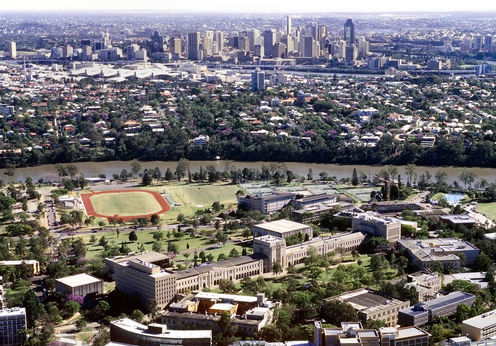
Australian science has a great reputation for innovation. From ultrasounds to quantum computing chips, buffalo fly traps to Wi-Fi, Australians have long been at the forefront of technology in medicine, agriculture, and science.
We need stable, national research funding programs to continue this tradition. Competitive grant schemes from the Australian Research Council (ARC) and National Health and Medical Research Council (NHMRC) provide much of this funding, and are the main mechanism for early-career researchers like us to build ourselves up to be world-class in our fields.
But now, the government is threatening to scrap a vital stepping stone for mid-career researchers: the ARC Future Fellowships. With the end of other five-year funding schemes like the ARC Australian Research Fellowship (ARF) and ARC Queen Elizabeth II Fellowship (QEII), the Future Fellowships are the only remaining dedicated funding scheme for mid-career researchers.
Rungs in a tall ladder
Forging a career in science isn’t glamorous. It takes more than seven years of training until you emerge at the bottom of the academic pyramid. And only ~0.5% of PhD holders will make it to the level of professor. But we do our jobs because we believe that in the long term our work will help others.
In the early stages of a research career it is especially important to have a clear funding pathway, as researchers are expected to support their own salary and research budget through competitive grant schemes. Future Fellowships are a crucial rung in that ladder.
They generally last three to five years, and provide the salary and a modest research budget for many of our brightest mid-career researchers, helping them to develop the skills and experience necessary to earn significantly larger ARC and NHRMC grants later in their career.
In fact, last year, as Federal Education Minister Christopher Pyne noted:
It is crucial that we provide support for the nation’s most highly qualified mid-career researchers. We need to ensure that Australia’s best minds stay in this great country to do their research, which in turn bolsters our capacity to innovate.
Scrapping Future Fellowships would have a significant impact on the Australian research community, with knock-on effects for innovation, the economy, and society at large.
Short term cuts, long term damage
Future Fellowships have proven to be an excellent way for Australia to attract and retain outstanding mid-career researchers who are moving upwards in their field. This is particularly valuable because we know young scientists are more innovative than their senior colleagues, so supporting them is a great way to foster new ideas.
Although foreign nationals and Australians returning from overseas are a portion of the people funded, the vast majority of funding has furthered the careers of resident Australians.

The threat of dumping Future Fellowships is an immediate concern for mid-career researchers, but also impacts early-career researchers like us as it paints an ominous picture for our career paths. As immigrants ourselves (Michael is from Scotland and Maggie is from the USA), we know the siren song of home gets louder as career opportunities diminish.
It also affects Australian researchers working overseas. A recent example is an Australian scientist currently working in the USA who recently turned down an ARC grant designed for early-career researchers precisely because of the lack of a clear plan for career progression in Australia. We may be successful with one grant, but what of our future in three, ten or 15 years time?
Missing rungs
There were never a huge number of Future Fellowships – nationally only 150 to 200 – but they were designed for outstanding mid-level researchers who finished their PhD five to 15 years ago, working in areas of national importance, like fundamental sciences and engineering.
These aren’t abstract wanderings but are real, relevant, and valuable projects that help us achieve Australia’s Strategic Research Priorities. Further, this is the funding that we look to as a vital career step as we rise as researchers.
As early-career researchers, we are watching as a rung of career progression is removed from above us and it’s making us ask the question: if there’s a gap in the career ladder, then why should we keep trying to climb? Maybe a different ladder or another country will value us more.
It’s also demotivating to see those above you struggle. Cutting funding this year means that next year there are a larger number of un-funded researchers, fighting over a decreasing pot of money. We know instead of the 18% success rate of funding applications in 2014, it will be even lower in the future.
How do we fix this?
We want a positive community of Australian researchers to work with, to learn from and to drive more amazing discoveries. As early-career researchers, we want to be part of work that leads to “the development of new ideas, the creation of jobs, economic growth and an enhanced quality of life in Australia.”. But how do we do this without a clear strategic plan for building Australia’s brightest researchers?
It’s time that the government works on a plan for research and researcher development in all disciplines. The Office of the Chief Scientist of Australia also supports a national strategic plan for science. We need to know that we’re not on a career path that will end abruptly. Then we can get back to working on the next Gardasil, Wi-Fi, or – dare we say – Vegemite.
Michael Lawrence Crichton is a member of the Executive Board of the Australian Early/Mid Career Researcher Forum.
Maggie Hardy is a member of the Executive Board of the Australian Early/Mid Career Researcher Forum.
